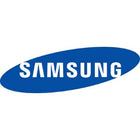Apple
Find all the RAM Memory, SSDs and accessories needed to update your Mac and have it running up to the speed of a new Apple Mac here on this one page.Utilise the dropdown boxes to find the correct RAM Memory and SSD upgrades for your iMac, MacBook Pro, MacBook Air, MacBook, Mac Mini, MacPro and Xserve. You can be confident you will select an upgrade you know is going to be both guaranteed compatible and reliable every time.
You can call, chat or email our upgrade team at anytime, we love helping people choose the right upgrade to extend the life of their Apple Mac.
Money back guarantee for 100% compatibility. No questions asked refund policy. Lifetime warranty on RAM Memory, five years on SSDs. Local technical staff available to assist you at any time.
Welcome to the Upgradeable Apple model page. You can quickly search our database and find your model and what upgrades you can buy to improve its performance.
Start by clicking on the "find your model series" box. A drop down list of models should appear.
Choose what series your Mac belongs to, such as iMac. Step 2 is clicking in the next box "Select a Model" and all the models in that series will appear. Scroll to choose your model.
When you find your model, selecting it will make all the upgrade options appear.
If you have any problems, please contact us via our online contact form or call our office. We appreciate all feedback, it helps improve our service.
1. Click on the Apple icon on the top left of your screen
2. Click "About this Mac"
3. Click "More Info" or click "System Report" in newer Macs.
4. In "Hardware Overview" look for "Machine Identifier" or "Model Identifier" in newer iMacs
An example of a model identifier is iMac7,1.
This is a very hard question to answer as it can be very specific to each user.
If your Mac has a low maximum RAM size like 4GB or 8GB, then upgrade to the maximum. You'll need as much RAM as you can get. Then consider an SSD upgrade, it is like having a huge RAM drive, when the Mac runs out of RAM it will use the hard drive as virtual ram. An SSD speeds up this process as it is almost as fast as the RAM.
If your Mac can be upgraded to 16GB or 32GB, we currently recommend between 12GB and 16GB. Current versions of OSX will use as much RAM as you give it, but performance increase flattens at around 16GB.
However, if you are a high graphic user - playing games, or editing videos and photos you will need between 16G and 20GB. You really should consider 32GB.
We hear this question everyday. A lot of Mac users call us after they have upgraded to the latest OSX and there computer has slowed down. Why?
The simple answer is you need more RAM. When you upgrade your OSX, files get bigger, and the computer want to do more. All this activity needs to go into the RAM before the CPU can process it. When the Mac runs out of RAM it starts using the hard drive as ram. This is called Paging. You'll start to see the spinning wheel on screen and the Mac freeze. Running your computer like this is the equivalent of driving your car in first gear all the time. You wont reach top speed, and your car will wear out fast. Install more RAM, it will fix the immediate bottle neck.
If you have reached your maximum RAM alowed, or you want better performance after a RAM upgrade then consider an SSD. For a lot of models, it is a simple procedure. We can advise on the best way to upgrade.
Yes. In many cases with both iMacs and MacBook Pros you can exceed the official stated maximum RAM Memory amount as initially determined by Apple.
The reason for this is simple. In most cases the higher density module was release after the iMac or MacBook Pro and Apple never retroactively updates their upgrade information.
One example of this is the 2011 MacBook Pro. Choose any 2011 MacBook Pro; any screen size, any CPU speed, any model identifier for a 2011 MacBook Pro, whether be an early or late 2011, the official stated amount of RAM Memory these devices can take is 8gb (2x4gb module).
However it is well known that the entire range of 2011 MacBook Pros are quite happy to utilise a maximum of 16gb of RAM Memory (via 2x8gb modules). The 8gb module was released after the MacBook Pro and as stated previously, Apple does not update this information.
We have sold hundreds of 16gb upgrade kits for the 2011 range to many customers who are now more then happy to be able to utilise their MacBook Pro to it's full capacity and extend the life of their laptop.
Another popular system that this applies to is the 27" 2011 iMac. Apple stated official maximum RAM Memory....16gb. Utilising 4x4gb modules. Another device that is more then happy having individual 8gb modules instead. Unofficial maximum....32gb. Utilising 4x8gb modules.
We have sold thousands of 8gb modules into the 2011 iMac range without issue and subsequently making many, many customers very pleased. Customers are now free to add up to 32gb RAM Memory into these iMacs and continue to utilise them far into the future.
Then you should consider replacing your existing HDD with an SSD(solid state drive)
Upgrading the memory in your computer is usually the first step to increasing it's performance. Additional memory allows you to run more applications simultaneously without the computer slowing down. It also allows you to multi-task to a much greater degree as your applications, email, web browsing, etc. all have more RAM to use to run efficiently.
However additional RAM does not solve all the issues of a "slow" computer. If you find that it takes the latest OS a long time to load or your spreadsheets are taking minutes before they are ready to use, then you should consider swapping out your old spinning HDD for an SSD.
SSDs will run up to 12 times faster then a HDD and will have the OS loading and ready to use within seconds instead of minutes. All complex programs, high res video, complex audio and other large applications will load, ready to use, within seconds instead of taking several minutes before being ready to utilise.
In a working environment, waiting minutes each time a new program loads or for your computer to be ready to use, is a time consuming and costly exercise. Added up, wait times increase to hours lost when totaled over the course of just a week.
None of us here have that kind of time to waste, do you?



